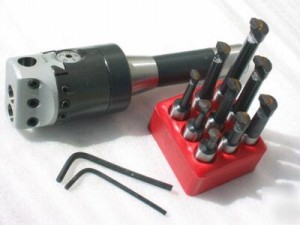Drilling, boring, then reaming is the proper order of operation when machining a hole. This is just one of the fundamentals you will learn in Machining 101. Whether you’re on a manual mill or a cnc milling center, this process will get you the most accurate hole size.
Why can’t I just drill? That is a very good question, if you’re just starting out as a machinist or are in training, you probably won’t know how every kind of tool is going to perform. While a drill, even when spot drilled, can make a nice looking hole, it can’t always hole a tight diameter or circularity tolerance. A standard drill can walk, and that can change the location if it’s a thru-hole. Drills are not always ground perfect, resulting in one lip bigger than the other. This causes the hole to be more egg-shaped and often over-sized.
Want a perfectly circular hole? The boring bar comes next because, unlike a drill, it is sturdy and will follow the same path all the way down the hole. A drill is floating in its holder that causes run-out, but a boring bar is sturdy and will make a circular hole, whether the existing hole is already or not.

The reamer comes last if you want an accurate hole. You should only leave several thousandths left after boring, depending on what material you’re cutting. A reamer is much more precise than a drill, but it will follow the path of the existing hole. This is why you should bore the hole prior to reaming, otherwise the ream will follow the path of the drilled hole, which may not be straight. A bore is accurate, but you can get a better finish with a reamer, and it can still hold tenths for a tolerance if you have a good reamer.
